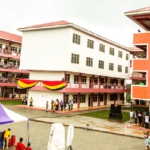
John Mahama will not cancel the Free SHS policy. He campaigned and got massively voted for based on that vow, among others.
This is because in our collective poverty, the “Free SHS” has been a saviour, lifting financial burdens off the backs of many parents, especially those from low-income and rural families who would otherwise be excluded due to financial constraints.
Who doesn’t like freebies!
Problem, however, is that as good and God-sent as the policy is, the visionary did not heed the advice of many to give it second thoughts, particularly the concerns of people like the then Finance Minister, Ken Ofori-Atta, who thought that the policy could be worked out to discriminate between the haves and have-nots. If the Statistical Service has been relied upon to produce the list on which the Livelihood Empowerment Against Poverty (LEAP) programme funds are disbursed, it should be possible to stretch this LEAP system of positive discrimination to determine who is poor enough to benefit from Free SHS.
Having rushed it through, sadly, the consequences are hitting us hard in the face. The sheer enrollment numbers are dizzying, and like all dizzy people, we are reeling under the implementation challenges, including overcrowding and overworked facilities.
The effect is general, but is worse in hitherto reputable star-rated schools such as Augustine’s and Aggrey Memorial and Mfantsiman Girls in Cape Coast, and Opoku Ware and Prempeh in Kumasi.
One effect of this malaise is the introduction of the double-track system, with all its attendant wahala. With students split into two cohorts attending school at different times, the situation has further degenerated. Imagine that students spend only one month in school and three months on holiday. Take Achimota. In the immediate past term, students reported on September 20 and were on their way back home on October 17!
No wonder John Mahama, in opposition, vowed to review Free SHS. It’s been nearly a year since his return, but there is no word about the review.
It is not certain if his Minister of Education, Haruna Iddrisu, had this particular issue in mind when he recently announced plans to reclassify some senior high schools in a new policy that will see 10 Category A schools downgraded to Category B and another 10 Category B schools upgraded to Category A. The move, he said, will be supported by major infrastructure investment to ensure equity in school placement.
Speaking at a press briefing at the Ministry on Tuesday, October 14, Haruna Iddrisu explained that the decision was part of efforts to ease pressure on a handful of elite schools during the placement process.
So what happened to the Community Day Secondary School concept? I find it surprising that a government led by the champion of Community Day Schools has not spoken almost one word about it since it returned to power in January 2025.
The argument should not be reduced to how many E-Blocks were completed in Mahama’s first term and how many Akufo-Addo added or left in the bush. The fact remains that in 2014, Ghana and the World Bank Group signed a US$156 million financing agreement to improve access to secondary schools. It was aimed at enrolling 30,000 students in secondary schools within six years.
Between 2014 and 2016, government of Ghana had awarded 101 contracts for E-Block school buildings, while the World Bank, through its Secondary Education Improvement Projects financing agreement, awarded 23 projects. By the end of 2020, more E Blocks had been added, 14 by GETFund and 16 by World Bank Group.
A standard E block school has classroom blocks, science laboratories, toilets, teachers’ flats, the headmaster’s bungalow, technical and vocational blocks and other core structures and furniture.
Few policies make more sense than the day-secondary school concept. Children in the community do not need dormitories or hostels to access education. They simply walk to school or go by tro-tro/pragia scooters – unlike the current system, where children as young as 15, who have never left the home or the care of parents, are now compelled to rent hostels where they have to spend hours cooking and caring for themselves.
It’s all the result of our unbridled craving to be in a boarding house.
No wonder, the increase in the number of SHS female students with babies by unknown and unknowable fathers! No wonder that discipline has broken down almost irreparably.
I am convinced that if there is hope for the future of education, what with all the financial, special and other constraints, it lies in the day-school system.
Where is John Mahama, the apostle of Community Day! Where is Professor Naana Jane Opoku Agyemang, the lady who is credited with conceptualising and, in fact, actually designing the E-Blocks!
In three years, the World Bank Group has given us 39 E-Blocks. Mahama has three more years to go. He could ask the World Bank to help him leave Ghana an educational legacy, with 39 more.
And while at it, must the government of a country as poor as Ghana be saddled with providing school uniforms!!!




